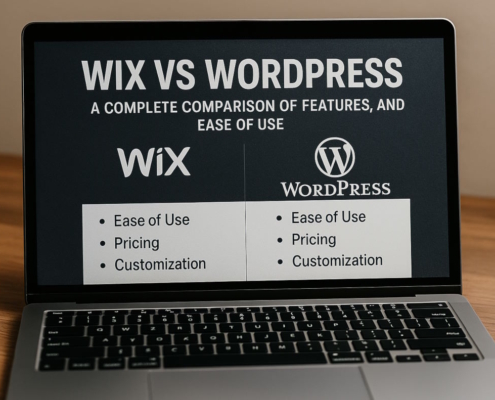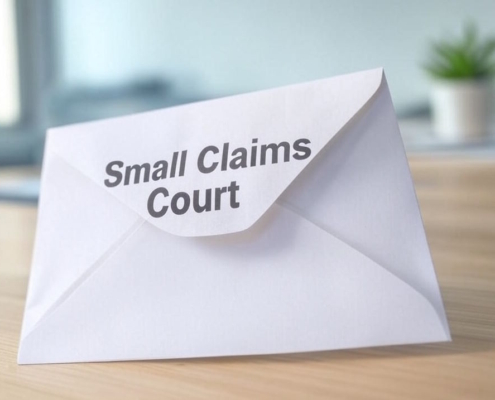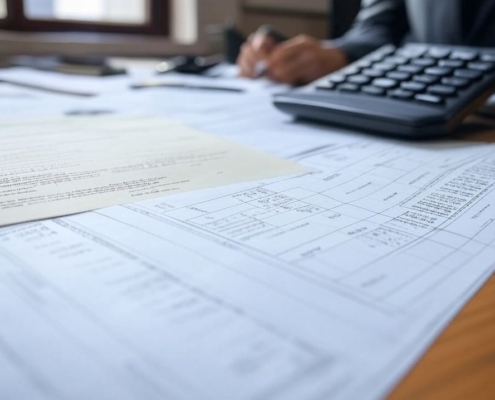What is a P&L statement?
Do you make money or do you lose it? To keep tabs on your company’s financial health, you should analyze the profit and loss statement on a regular basis. You may use this to determine if you’re heading in the right direction for development and profitability or if you’re losing money and need to make adjustments.
In this guide, you will learn the ins and outs of making a P&L, how to interpret one, and how to use an example P&L to help you understand the process.
Getting a grasp on these core principles is essential if you want to set your company up for success.
Businesses use a financial statement known as a profit and loss statement to provide an overview of their income and spending for a certain time period. Profit and loss statements go by many other names, including income statements, statements of profit, and statements of operations. Although it is not required, most companies generate a profit and loss statement at least once a year and usually more often.
Are Profit and Loss Statements and Income Statements the Same Thing?
Profit and loss statements and income statements are the same financial document. That is to say, the income statement and the profit and loss statement are identical. You could hear this report referred to as an operational statement, earnings statement, statement of financial performance, statement of expenses, or statement of operations. It shows everyone involved how the company is doing financially and whether it’s making money or losing money.
Comparison of Balance Sheet and Profit and Loss Statement
You can’t get a whole picture of your company’s health from just a profit and loss statement. Equally important are balance sheets. As of a certain date (such as December 31), they detail the equity, liabilities, and assets of the business. They reveal whether a business is overly indebted.
To keep track of the money coming into and going out of the business, a cash flow statement is useful, and a balance sheet may help with that. If a business has a healthy balance sheet, it means it can pay its bills when they’re due.
The profit and loss statement (P&L) is the most essential financial statement as it reveals whether or not a company can turn a profit.
The profit and loss statement, like any other financial statement, is easy to prepare. Having an accounting system allows the organization to easily create reports that track sales, costs, assets, and other important data as they happen.
How Frequently Are P&L Statements Drawn Up?
Statements of profit and loss are often prepared by businesses on a monthly, quarterly, or annual basis (although quarterly and annual statements are particularly encouraged). Companies are typically required to provide profit and loss statements spanning many years when they apply for a small business loan.
Similarly, when a firm is looking to attract investors or sell, potential buyers want to view profit and loss statements (P&Ls) from a number of years to assess how the company is doing.
It is not necessary to create and submit a P&L to the IRS in order to comply with tax laws. That being said, the profit and loss statement (P&L) is the tax return itself, which reflects the income and spending of the firm for the year.
There are disparities between the P&L and the tax return due to the fact that not all costs are deductible on the latter. For instance, business dinners are reduced by 100% on the P&L, but only 50% on the tax return.
Different Forms of P&L Statements
A variety of profit and loss statements are available to meet the needs of businesses with varying degrees of complexity and in-depth analysis. Your approach choice impacts the statement’s presentation and the insights it provides. If you want to pick the right one for your business, you need familiarize yourself with the many kinds of profit and loss statements.
1. Single-Step Method
To make a profit and loss statement, the simplest way to do it is using the one-step approach. To calculate the net income or loss using this method, you start by listing all revenue items at the top of the statement and then remove all costs. A single computation is all that’s needed.
The one-step process is ideal for small companies with straightforward financial arrangements. It offers a simple and fast approach to evaluating profitability without requiring the data to be divided into many categories. Unfortunately, the absence of detailed data in the single-step P&L makes profitability analysis more challenging.
2. Multistep Method
It takes more work to use the multistep method. In order to analyze the company’s financial performance in more depth, it is necessary to classify revenues and costs as operational or non-operating. Three distinct computations are involved:
Operating income = Gross profit – Operating expenses
Gross profit = Net sales – Cost of goods sold
Net income = Operating income + Non-operating items
The multistep approach is best suited for bigger organizations or those with more intricate financial systems due to the extra information breakdown it provides. As a result, you can see the big picture of the company’s profits and where you may make improvements.
3. Cash Method
Profit and loss statements prepared using the cash method are based on the company’s real cash inflows and outflows. When cash comes in, this process records income, and when money goes out, it records costs.
Companies with fewer than five employees or that operate as sole proprietorships generally choose this simple alternative. When it comes to profitability, however, the cash approach does not always present an accurate picture since it does not take into account revenue that has been received or costs that have been incurred but have not yet been paid.
4. Accrual Method
Rather than recording the timing of cash transactions, the accrual technique of compiling a profit and loss statement centers on the dates of income and cost. If you use this strategy, you can record a sale or service as revenue even if you haven’t received money yet. Spending is also documented at the time it occurs, regardless of whether the invoice has been paid or not.
Larger companies often choose the accrual technique over the cash method when comparing the two since it provides a more comprehensive picture of the company’s financial health.
The ABCs of Profit and Loss Statement Analysis
Examining income and expenditures line by line and comparing the numbers to prior periods is essential for successfully reading and analyzing a profit and loss statement. By doing so, it is easy to discover patterns in business, whether they are good or bad.
The first step is to figure out if the business uses the cash basis (revenue is recorded when it’s received and expenditures are recorded when it’s paid) or the accrual basis (revenue and expenses are recorded whenever a transaction happens, regardless of whether cash has been exchanged).
Profit and loss statements show revenue and costs in different ways depending on the accounting technique. After you have this information, you can look at the profit and loss statement line by line.
Most Important Elements of a P&L
Earnings and expenditures for the statement period are the two primary components of the profit and loss statement. There are a number of sections in these two sections that are relevant to your company. Lines will differ in each profit and loss statement.
- Revenue
First and foremost on a profit and loss statement is revenue, which encompasses all forms of money. You can find this line item on the profit and loss statement under a variety of names that describe the company’s operational income: sales, gross revenues, fees, etc. In most cases, interest and other non-operating forms of income are considered distinct from operational revenue.
Once again, the timing of revenue reporting on the P&L is affected by the accounting technique. Earnings are recorded at the moment of sale under the accrual method of accounting, regardless of whether payment has been received or not. The receipt of payment triggers the recording of revenues in the cash method.
In order to make reported income more accurate, it is possible to modify gross sales by setting up an allowance and removing it from revenues, taking into account previous experience with customer returns or refund requests.
- Cost of Goods Sold (COGS)
Every business that deals in product sales needs to calculate their cost of goods sold (COGS). After deducting this cost from the sales, the actual revenue (gross profit) from the sales is calculated. This cost is the cost of the inventory or the materials that were used to make the items.
A business that sells an item for $100 but has $20 in inventory would earn $100 in revenue but only $80 in gross profit after deducting $20 for cost of goods sold.
- Expenses
Profit and loss statements for both large and small firms include all operational expenditures in the expense section. Here are several examples:
- Employee salaries, payroll taxes, and benefits
- Advertising costs
- Office supplies
- Interest expenses
- Professional fees for accountants, attorneys, etc.
- Payments to vendors or contractors
Gaining a grasp of asset depreciation is essential for accurately accounting for certain costs. Capitalization and write-off are two ways to handle the acquisition and usage of certain items, including office equipment. For instance, if someone buys a $1,000 computer and doesn’t use accelerated write-off to figure out their tax liability, the purchase will be spread out over 5 years. An annual expense of $200, or 20% of the computer’s cost, shows up in the profit and loss statement.
To show the difference between operating and non-operating costs, like interest and taxes, they are often kept separate from operational expenses.
- Gross Profit
A company’s gross profit is its net income after deducting the cost of products sold from its revenue. In the absence of inventory, gross profit and gross revenues equal one another for a service organization.
- Net Profit or Loss
The net amount is the profit or loss for the period for a business after taxes are deducted from pretax income. It is common practice to use EBITDA as a proxy for net profit or loss when comparing businesses across sectors and tax scenarios or when precise figures are unavailable.
Profit and Loss Statement Analysis
You can tell if a business is profitable or not just by looking at its profit and loss statement. However, going into further depth could reveal a great deal more. Whether you’re comparing the success of a specific company to another (as an investor might) or comparing the performance of a single business across several accounting periods, this is crucial when constructing a comparative income statement.
It is possible to interpret a P&L in several ways:
The purpose of horizontal analysis, often called series analysis, is to track the evolution of a single line item across time. For instance, to determine the annual percentage growth rate of sales over a five-year period. Horizontal analysis is useful for spotting trends, such recurring events, and warning signs, like an excessively high cost of goods sold (COGS).
In vertical analysis, sometimes called common-size analysis, the emphasis is on how large an item of spending is in relation to the total income of a business. For instance, what is the historical trend of a company’s marketing and research expenditure as a percentage of its revenue?
What You Need to Know to Make a P&L
If you keep meticulous financial records in your accounting system, creating a profit and loss statement may be as easy as clicking a button. Upon receiving a command, the accounting system will prepare your profit and loss statement.
Making a profit and loss statement by hand is a little more complicated and takes more time. You may use a template to make the work easier. A basic, step-by-step procedure for preparing a profit and loss statement is as follows:
- Select a time frame for reporting. Profit and loss statements offer a financial overview for a certain time frame, such a month, quarter, or year.
- Collect data and financial accounts. Invoices, receipts, bank records, and credit card statements may all provide the information you need to determine your income and expenditures.
- Total up the money you made. Get your total revenue by listing all of your sales. If it helps or is required for your company, you can divide it up into several types of sales.
- Provide a catalog of your cost of goods sold. After you’ve determined your gross income in Step 2, deduct your entire COGS. Here we have your gross profit.
- Keep track of all of your expenditures. Make a new category for every kind of spending. Keep in mind that interest on business loans will be accounted for separately.
- Calculate the EBITDA. Take your gross earnings from Step 4 and subtract all of your costs from Step 5. To put it another way, EBITDA stands for earnings before interest, taxes, depreciation, and amortization.
- Perform the calculations for interest, taxes, depreciation, and amortization. Include any amounts owed on company debt, depreciation and amortization costs, and projected taxes on net income (common when preparing a profit and loss statement prior to submitting a return).
- Find the net income. Step 7: Deduct the amount of interest, taxes, depreciation, and amortization from EBITDA, which was calculated in Step 6.
You will have all the necessary information to complete your P&L when you have finished each of these steps.
Evaluate your potential for the future
People no longer think in the short term. In a macroeconomic climate that is difficult to predict, companies need to have a plan B.
When you examine the past data in your profit and loss statement and extrapolate each line item for income and expenses, you may predict how well you will do in the future. This can help you guess where the company will be in three, four, or five years.
Also, after you have your predictions, you should check your profit and loss statement on a regular basis to see how they stack up against your actual results. This is the only method to assess the accuracy of your projections and make improvements over time.
Users outside the company
Profit and loss statements are sometimes necessary for businesses to satisfy investors and banks.
Having a P&L also gives you some assurance that you are doing your taxes right.
As an example, consider Lucy, who owns a clothing company. If Lucy ever hopes to sell her company to a bigger business, she’ll have to have solid performance records to prove that her company is worth buying.
When it comes to analyzing her P&L statement, Lucy might use both vertical and horizontal analysis. Combining the two will increase the analysis’s value. She might, for example, compare a cost over time as a percentage of revenue.
This allows you to evaluate the reasonableness of an expense’s shift from one period to another in relation to the shift in revenue.
So, back to Lucy. In October, Lucy’s sales were $10,000; in November, they were $20,000, all because of her Black Friday promotion.
However, her gross profit percentage dropped from 80% to 40%, suggesting that her discounting technique may have been overly aggressive.
On the other hand, she may find that her Influencer spending is growing as a percentage of her income, suggesting that it isn’t having the desired effect on her sales.
The P&L Statement and Its Significance
Every company’s financial records should include a profit and loss statement. The report summarizes the company’s financial performance for a given time period in a straightforward and simple manner. A P&L statement summarizes income, expenditures, and profit or loss to provide insight into the financial well-being of a company.
In order to identify areas for improvement, like cutting costs or shifting focus to more profitable goods or services, it is crucial to understand your financial accounts, including the P&L statement. Investors, lenders, and other stakeholders typically demand a profit and loss statement when evaluating a company’s financial health and development prospects, thus its significance extends beyond internal usage.
Conclusion
Profit and loss statements aren’t the most exciting subject to discuss, but they’re essential. Always keep and examine your profit and loss statement to make sure you’re in control of your company’s money.






























